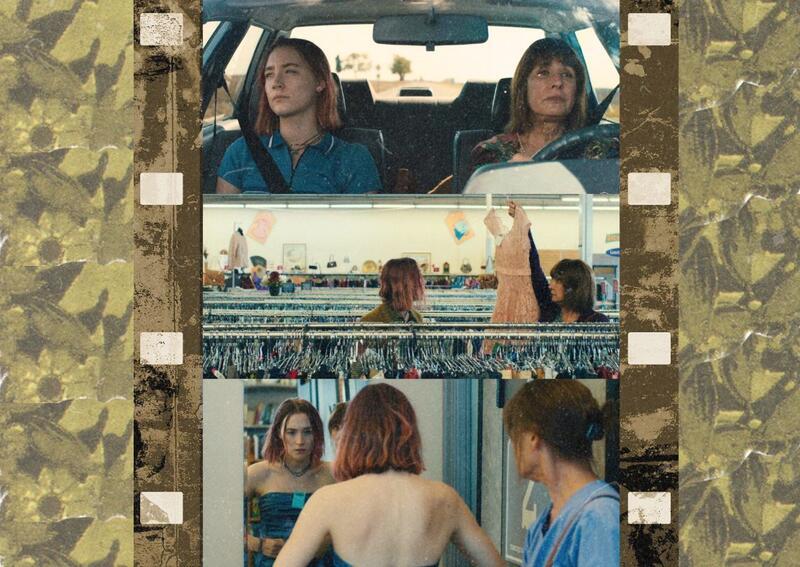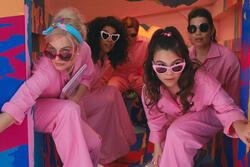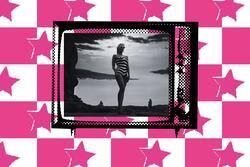Lady Bird: The Story of a Teenage Girl
My first viewing of Lady Bird at age fifteen ended with my stomach in knots. For the first time, I truly recognized myself in a film, and I did not appreciate what was revealed to me. I was not quite ready to self-reflect then, but when I watched the film again a year later at my brother’s urging, I was finally prepared to confront my discomfort. This time around, I was able to appreciate the true beauty of Greta Gerwig’s film.
Gerwig’s own words in a Vanity Fair interview beautifully encapsulate my experience with the film. While addressing the common misconception that the film is autobiographical, she explained, “It’s not the events of my life, but it definitely is my marrow in some sense. It’s my heart, and it has an emotional resonance for me that rhymes with the truth.” This sentiment deeply echoes my experience with the film. Lady Bird is a teenager in the exact same way I am —messy, hurting, and always trying oh-so hard. Personality-wise, I am nothing like the titular character, and yet, she somehow understands me like nobody else.
The opening scene masterfully sets the tone for Lady Bird’s complex relationship with her mother, as Lady Bird (Saoirse Ronan) and her mother Marion (Laurie Metcalf) drive home from a college visit. As they listen to the Grapes of Wrath audiobook, they are both moved to tears by the ending. However, immediately after the book ends, they start bickering, burning through a multitude of topics as quickly as only a mother and daughter can. Their spat culminates in Lady Bird’s mother telling her that her work ethic is only suitable for a community college, followed by Lady Bird jumping out of a moving vehicle—obviously, the only logical response to such a comment! This scene highlights just how deeply Lady Bird desires to escape from the constraints in her life, especially those she sees as imposed by her mother.
How many times have we all been stuck in an uncomfortable situation wishing for a way out? Lady Bird is the only one brave enough to make her own escape. This scene perfectly frames the film as the story of a girl desperate to escape everything in her life, from her own mother to the city of Sacramento itself.
Stuck attending a Catholic high school, Lady Bird, armed with her pink hair and sole friend Julie (Beanie Feldstein), wishes for more. An avid dreamer, she is often brought back to reality, somewhat rudely, and often with humor, by both her mother and the nuns. She changes her name from Christine to Lady Bird in an attempt to form an entirely new identity. She throws herself into the drama club despite having no experience, then quits when overshadowed by Julie and her marvelous voice. She meets her first boyfriend there, who turns out to be gay. She pretends to live in a mansion out of embarrassment for her real home on the “wrong side of the tracks.” She makes mistakes but rarely seems to apologize for them, instead preferring to run to her room and slam the door behind her. Through her impulsive actions, she allows teenage girls everywhere to imagine what life would be like if we truly allowed ourselves to express our opinions, live without apology, and be seen as uncool.
However, despite her “not like other girls” façade, Lady Bird is not completely willing to give up the idea of fitting in. She starts to distance herself from Julie in order to befriend popular girl Jenna (Odeya Rush) and chase after heartthrob Kyle (Timothée Chalamet), demonstrating the difficulty of pursuing both individuality and popularity. Nonetheless, this movie is no Mean Girls. The popular girls are not constantly scheming about humiliating Lady Bird. Instead, Gerwig gives us a much more realistic reality: the true popular girls just don’t care that much about the “Lady Birds” of the world, and the love stories don’t always end with a happily-ever-after.
Rather than a typical high school romance, Lady Bird offers the viewers a complex, messy, and emotionally resonant story about the love between a mother and daughter. Metcalf and Ronan shine throughout the film as they struggle to reconcile their respective visions for Lady Bird’s future. Their relationship is summed up perfectly in the dressing room of their local thrift store, as Marion explains, “I want you to be the best version of yourself possible.” Lady Bird replies, “What if this is the best version of myself?” Sigh. Such is the life of a teenage girl. Despite the fact that we have the rest of our lives ahead of us, it can sometimes be difficult to see the light at the end of the dark tunnel that is adolescence. There is a strong sense of hopelessness that stems from not knowing whether the anger will ever fade or if you will ever truly mature, and it sometimes feels impossible to converse with someone who has forgotten this feeling entirely.
The film's greatest strength is how well developed both the mother-daughter relationship and characters are, as neither woman is reduced solely to the “mother” or “daughter” role. Lady Bird is loud, brash, and funny, and encapsulates such a specific teenage mindset. Marion, on the other hand, is much more reserved and clearly wants what’s best for her daughter, even if she doesn’t always know what that is. Both characters are stubborn and rude at times, but their love is evident throughout the film, especially during their phone call that concludes the film as Lady Bird finally acknowledges how much she misses both Marion and Sacramento after spending the entire film working to escape them.
Lady Bird is not a character written to be liked by everyone. She’s messy, and flawed, and at times, you want to reach through the screen and shake some sense into her. But that’s what makes her real. This film masterfully captures the desire to be understood by others when you do not yet understand yourself. It may take multiple watches before you find yourself ready to reflect on these awful, wonderful years, but I cannot think of a better use of 94 minutes. Lady Bird shows us that we are valid in our unknowingness, a message many teenagers have been waiting to hear for our entire lives.
This piece was written as part of JWA’s Rising Voices Fellowship.







